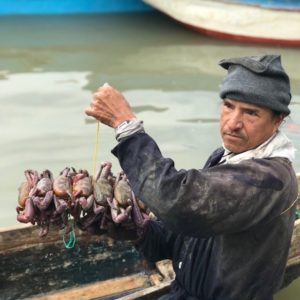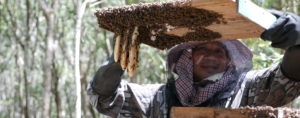Mangroves and World Food Day 2018
Mangroves feed the world
 October 16 is World Food Day, an opportunity to appreciate the often overlooked systems that bring food to our tables each day. Mangroves are one of the breadbaskets — or fish baskets — of the coast. They are integral to many fisheries, but also support the production of fruit, honey, flour, oils, and fuel to cook food. With 60% of the world’s population living on coastlines, mangroves underpin local nutrition while also feeding the global community.
October 16 is World Food Day, an opportunity to appreciate the often overlooked systems that bring food to our tables each day. Mangroves are one of the breadbaskets — or fish baskets — of the coast. They are integral to many fisheries, but also support the production of fruit, honey, flour, oils, and fuel to cook food. With 60% of the world’s population living on coastlines, mangroves underpin local nutrition while also feeding the global community.
Fish
Mangroves are important to fisheries on both local and global scales. They are described as a “nursery” because their tangled roots block large predators and provide shelter and food in the form of trapped organic matter and nutrients for young fish. Mangroves are utilized by coastal fish and some pelagic and reef fish. Commercially-valuable species include shad, anchovy, mangrove red snapper, catfish, tilapia, and barramundi. There are also many locally-valuable species that sustain small-scale fisheries and villages. Protecting mangroves also boosts the productivity of regional fisheries, both in the form of population growth and prey sources.
Shellfish
Mangroves support a pantry-full of shellfish. This includes shrimp, crabs, gastropods like snails and giant mangrove whelks, and bivalves like oysters and clams. These play a vital role in the diets and livelihoods of local communities and are also sold at internationally.
Other products
All mangrove trees and shrubs produce flowers, many of which develop into fruits. Some of these fruits are edible. Sonneratia caseolaris, also known as the crabapple mangrove, yields a green fruit that is persimmon-like in appearance. It is used in different dishes in Sri Lanka and Maldives. Mangrove fruits and seeds can be consumed directly or processed into cooking oils and flour.
 Mangrove flowers also attract bees, which convert the flower nectar into honey. Honey can be harvested wild or local people can practice beekeeping. The honey can be consumed directly within the community or sold regionally and internationally, providing sustainable livelihoods.
Mangrove flowers also attract bees, which convert the flower nectar into honey. Honey can be harvested wild or local people can practice beekeeping. The honey can be consumed directly within the community or sold regionally and internationally, providing sustainable livelihoods.
Mangrove wood is harvested in some areas to produce charcoal and fuel-wood for cooking. It is possible for this traditional practice to be done at a sustainable level, although overexploitation is common.
Food Fight
Coastal land is highly valuable, and mangroves come into competition with other forms of food production. They are deforested for shrimp aquaculture, rice, palm oil, and coconut plantations. This demand must be balanced with the conservation and sustainable use of mangrove forests, for the health of the local communities and the coasts.